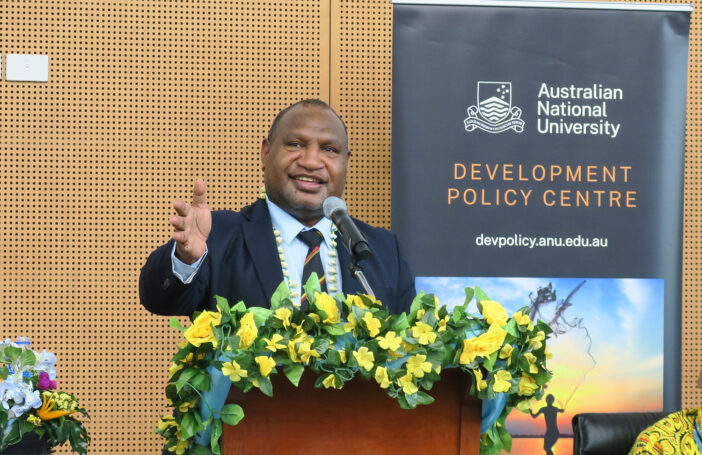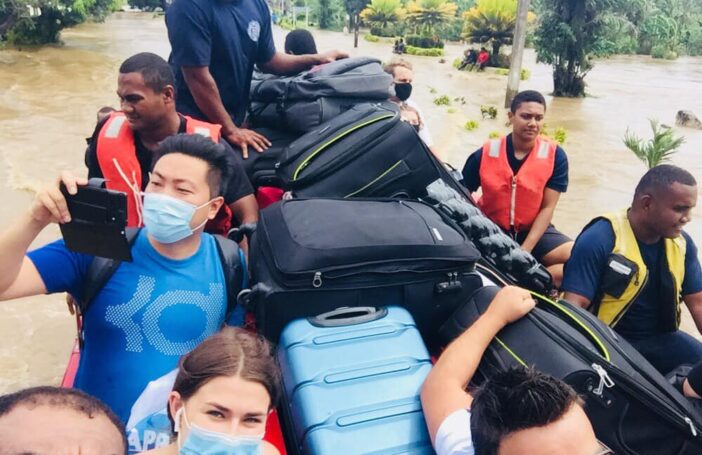Under Fiji’s Financial Management (Amendment) Act 2021, the minister responsible for finance is required to publish a pre-election economic and fiscal update on the official government website within 14 days of the commencement of the campaign period for a general election. With the announcement of the start of the official campaign period for the 2022 general election from 26 April 2022, the Ministry of Economy released the pre-election economic and fiscal update on 9 May 2022.
According to the Act, the pre-election economic and fiscal update must outline the current fiscal performance, plus an outlook of the economy for the medium term, debt stock, contingent liabilities, major fiscal risks, and relevant socioeconomic indicators. The update was released less than two months after the revised 2021-2022 budget was presented, on 24 March. The budget for the next fiscal year, 2022-2023, is scheduled to be delivered on 15 July 2022.
So, what does the pre-election economic and fiscal update show?
Some of the key macroeconomic indicators for the first quarter of 2022 show that the Fijian economy is slowly turning towards economic recovery. For instance, collections in net value added tax have increased by 25% in the first quarter. However, while consumption activity is tracking upwards, investment spending has remained dampened during the same period.
In terms of economic growth, the update shows larger declines in real GDP growth for 2019 and 2020 than were provided in the revised 2021-2022 budget in March, with new estimates at –0.6% and –17.2% respectively. The 2022 growth forecast stands at 11.3%.
The total revenue forecast is F$2.25 billion, against an expenditure commitment of F$3.72 billion for the year 2021-2022. This revenue forecast is largely built on the anticipated recovery of the tourism industry. The tourism forecast, however, seems overoptimistic. Based on the first quarter visitor arrivals, it is unlikely that Fiji will reach the forecast for this year – 50% pre-COVID-19 (2019) tourist numbers.
Even if tourism arrivals are close to the forecast target, expenditure by visitors will also matter. This will be affected by the level of domestic inflation and changing economic conditions in the key source markets of Australia and New Zealand. With falling real incomes in advanced economies, and the uncertainties stemming from the war in Ukraine, the post-pandemic recovery for Fiji will be slower than expected.
For this fiscal year, with the shortfall of F$1.46 billion financed through borrowing, total debt projection is 88.6% of GDP by the end of July 2022. Total debt servicing (interest plus principal payments) for the current fiscal year is F$717.8 million, equivalent to 32% of total revenue, or about 19% of total government expenditure. As expected, Fiji’s debt burden has continued to increase, and this has pressed the government to negotiate for a debt service suspension initiative (for around F$69.5 million of debt) with Exim Bank of China and Japan’s International Cooperation Agency.
The update also highlights the need to invest in income-generating strategies and activities to enhance economic activity in rural areas. It further emphasises restoring business activity and deepening financial inclusion. In a bid to do this, the government has implemented initiatives to provide seed capital for businesses. Part of this strategy involves the need to capitalise the Fiji Development Bank and other financing schemes such as agricultural cash assistance. This support is aimed at providing access to finance for small and medium enterprises (SMEs) and smallholder farmers.
However, the impact of these initiatives also depends on addressing the fundamental and prevalent challenges faced by SMEs and smallholder farmers. As a result, there is a need to address existing bottlenecks such as access to markets, support value addition, and invest in supply chain handling facilities.
While the government has identified agriculture, business process outsourcing, manufacturing and other value adding activities to boost economic recovery and growth, these sectors already face challenges such as high cost of operation due to high capital and transportation costs, and constraints related to supply of inputs, that will have to be dealt with.
It is clear that COVID-19 has exacerbated existing economic and social vulnerabilities in Fiji as the pandemic and its economic fallout hit the economy hard in 2020 and 2021. The latest poverty figures show that a quarter of the population lived in poverty even before the impact of COVID-19. Moreover, growing inflationary pressures for food and fuel threaten to chew household real incomes and any consumption-driven recovery and growth. Rising debt levels will continue to constrain the government’s ability to invest in public services.
The government asserts that there was ‘sustained’ economic growth from 2010 to 2018, and this outcome was underpinned by improved private sector confidence. However, this is questionable given that private investment as a percentage of GDP declined from 21% in 2013 to 10% in 2019. Boosting private sector investment will require substantial policy reforms to drive sustained economic activity.





